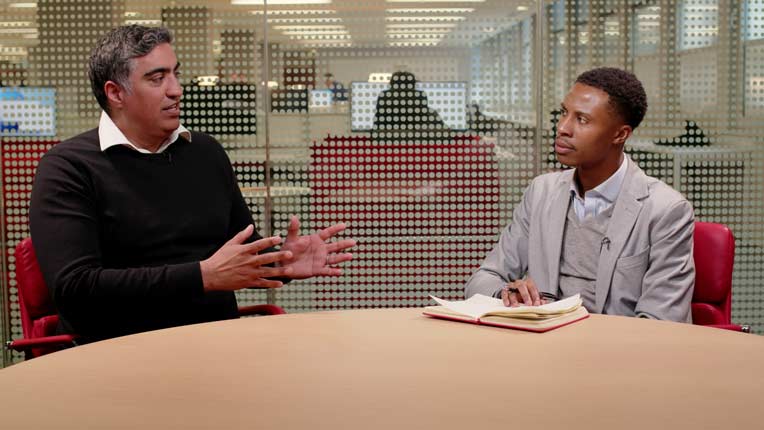Emma Wall: Hello, and welcome to the Morningstar series, Ask the Expert. I’m Emma Wall, and here with me today to discuss investing in property is Morningstar analyst, Szymon Idzikowski. Hello, Szymon.
Szymon Idzikowski: Hi, Emma.
Wall: So property is a very popular subject at the moment. Residential property and commercial property have gone up 10% in the last 12 months. Of course, it's easy for a property investor to talk up the asset class, but I thought it would be great to an unbiased view from a Morningstar analyst.
What exactly is going on with property, how investors can get exposed to the asset class? So what is going on?
Idzikowski: As you’ve pointed out, over the last few months it's been one of the strongest asset classes, and actually in fact, the outlook, the consensus for outlook is pretty strong as well. If you look on the U.K., there is the recovery going on and a lot of people believe that property again is going to benefit on the back of that and can grow even further.
Wall: Of course the U.K. recovery is embedded now. In residential property there are a lot of government initiatives to help boost the property market. Commercial property and residential property are quite separate beasts, aren’t they? And the one that’s easiest to access through a fund is commercial property.
We have had some difficulty with commercial property in the last six, seven years, 2008, what happened with commercial property funds?
Idzikowski: Well, let me maybe go one step back because there are two ways probably you can access property if you think about the fund investing. You can either buy them with open-end funds or closed-end funds. If you buy direct property, one thing you need to realise is that that the unit size of investment would be very big compared to either investing in equity or bonds.
What that means is that if you were to invest in an open-end fund, that’s investing in direct property, very often those funds will hold cash buffer, maybe 15% even 20% of cash to allow redemptions. But that doesn't actually guarantee you that you will be always able to withdraw money when you want, even though it's an open-end fund.
What happened in 2008 because the liquidity was so low and because there were so many problems in the market, actually some open-end funds impose gates to stop redemptions.
Wall: This is because the nature of bricks and mortar funds, these funds invest directly in property. Anybody who's bought or sold the property knows that it's not like an equity asset where you could decide to buy or sell something one day and almost immediately that is actioned. It takes time for these property transactions to come through. And when the market then falls or liquidity is not available as you say these exit restrictions were imposed, so that’s with open-ended funds. The same difficulties with trading property applies to closed-end funds, but how does the operating structure help in that respect?
Idzikowski: Well, given the structure is closed, there are no redemptions, right? It’s a closed-end structure, so all the money will circulate within the secondary market. But what actually happened with close-end funds in 2008 is that a lot of those funds would move to very high discounts and trade even over 60% discount to their net asset values.
So potentially you had an ability to sell your shares, but most likely you would you have to take a very big hit on your returns.
Wall: So, we’ve mentioned that the concept of bricks and mortar of direct investment. Have you got a fund in mind that that has a good track record in this area?
Idzikowski: Sure. So, one of the well-recognized close-end funds investing in direct property – in a commercial direct property is actually F&C Commercial Property (FCPT). This fund is run by investment veteran Richard Kirby since early 2005. Like I said, investing in commercial properties, it’s going to be retail, industrial or offices sectors.
Actually, since Richard's appointment the fund has returned over 7% on an annualised and currently yields over 5%.
Wall: Much like infrastructure funds, investors who are nervous about investing directly into property can gain a more diluted exposure to this sector through investing in equities that have that exposure to bricks and mortar isn’t that correct?
Idzikowski: Correct. And one great example of that would TR Property fund (TRY), which actually invest mainly in listed property and is going to be investing in U.K., but also in Continental Europe, but there is a small bucket invested directly in bricks and mortar buildings as well. But overall exposure is much broader.
Wall: The one thing that I think investors should remember before choosing what proportion of that portfolio they should expose to this asset class is that people's largest investment, their home, should be considered as part of their portfolio before allocating any extra property exposure.
Idzikowski: Absolutely.
Wall: So this is a niche holding, isn’t it?
Idzikowski: It is. It should be considered as maybe diversification of a broader portfolio.
Wall: Szymon, thank you very much.
Idzikowski: Thank you.
Wall: This is Emma wall for Morningstar. Thank you for watching.




























